Boeing 737
Developed to supplement the Boeing 727 on short and thin routes, the twinjet retained the 707 fuselage width and six abreast seating but with two underwing Pratt & Whitney JT8D low-bypass turbofan engines.The latest, and Fourth Generation, the 737 MAX -7/8/9/10 variants, powered by improved CFM LEAP-1B high-bypass turbofans and accommodating 138 to 204 people, entered service in 2017.[2] Preliminary design work began on May 11, 1964,[3] based on research that indicated a market for a fifty to sixty passenger airliner flying routes of 50 to 1,000 miles (100 to 1,600 km).[5] The engine nacelles were mounted directly to the underside of the wings, without pylons, allowing the landing gear to be shortened, thus lowering the fuselage to improve baggage and passenger access.[7] Many designs for the engine attachment strut were tested in the wind tunnel and the optimal shape for high speed was found to be one which was relatively thick, filling the narrow channels formed between the wing and the top of the nacelle, particularly on the outboard side.At the time, Boeing was far behind its competitors; the SE 210 Caravelle had been in service since 1955, and the BAC One-Eleven (BAC-111), Douglas DC-9, and Fokker F28 were already into flight certification.[5] The 737 went on to become the highest-selling commercial aircraft in terms of orders until surpassed by the competing Airbus A320 family in October 2019, but maintains the record in total deliveries.[23] After aircraft #135, the 737-200 Advanced has improved aerodynamics, automatic wheel brakes, more powerful engines, more fuel capacity, and hence a 15% increase in payload and range over the original -200s and respectively -100s.[41] As of September 2023[update], a relatively high number of 737-200s remain in service compared to other early jet airliners, with fifty examples actively flying for thirty carriers.[52] Boeing wanted to increase capacity and range, incorporating improvements to upgrade the aircraft to modern specifications, while also retaining commonality with previous 737 variants.In June 1986, Boeing announced the development of the 737-400,[59] which stretched the fuselage a further 10 feet (3.0 m), increasing the capacity to 188 passengers, and requiring a tail bumper to prevent tailstrikes during take-off and a strengthened wing spar.In November 1993, to stay in the single aisle competition, Boeing's board of directors authorized the Next Generation program to mainly upgrade the 737 Classic series.[1] It featured a redesigned wing with a wider wingspan and larger area, greater fuel capacity, longer range and higher MTOWs.On July 20, 2011, Boeing announced plans for a third major upgrade and respectively fourth generation of 737 series to be powered by the CFM LEAP-1B engine, with American Airlines intending to order 100 of these aircraft.[83][84][85] It was based on earlier 737 designs with more efficient LEAP-1B power plants, aerodynamic improvements (most notably split-tip winglets), and airframe modifications.[99][100][101] The 737 MAX 7 replaced the 737-700 and was predicted to carry 12 more passengers and fly 400 nautical miles (740 km; 460 mi) farther than the competing Airbus A319neo with 7% lower operating costs per seat.Early 737 cockpits also inherited the "eyebrow windows" positioned above the main glareshield, which were a feature of the original 707 and 727[122] to allow for better crew visibility.The low fuselage allowed passengers to easily board from a mobile stairway or airstairs (which are still available as an option on the 737 MAX) and for luggage to be hand-lifted into the cargo holds.The original design was too small to require this, and adding a fuel dump system to the later, larger variants would have incurred a large weight penalty.Pilot commands are transmitted to hydraulic boosters attached to the control surfaces via steel cables that run through the fuselage and wings, rather than by the electrical fly-by-wire systems found in more recent designs like the Airbus A320 or Boeing 777.[135] The 737 MAX introduced a 4 15.1 inch landscape LCD screen cockpit manufactured by Rockwell Collins derived from the Boeing 787 Dreamliner.The principal features of the Sky Interior include sculpted sidewalls, redesigned window housings, increased headroom and LED mood lighting,[141][142] larger pivot-bins based on the 777 and 787 designs and generally more luggage space,[142] and claims to have improved cabin noise levels by 2–4 dB.[citation needed] The T-43 was a 737-200 modified for use by the United States Air Force for training navigators, now known as USAF combat systems officers.Informally referred to as the Gator (an abbreviation of "navigator") and "Flying Classroom", nineteen of these aircraft were delivered to the Air Training Command at Mather AFB, California during 1973 and 1974.It is armed with torpedoes, Harpoon anti-ship missiles and other weapons, and is able to drop and monitor sonobuoys, as well as operate in conjunction with other assets such as the Northrop Grumman MQ-4C Triton maritime surveillance unmanned aerial vehicle (UAV).The BBJ1 was similar in dimensions to the 737-700 but had additional features, including stronger wings and landing gear from the 737-800, and had increased range over the other 737 models through the use of extra fuel tanks.A new airframe in a special Alaska Airlines livery flew an extensive test program, a major part of which was the use of SAF in blends of up to 50% including a flight from Seattle to Glasgow, Scotland, to attend the United Nations COP26 Climate Change Conference.During October 2023 a 737 MAX 10 destined for United Airlines flew a series of test flights to compare the emissions of SAF, including the contrails, with those of conventional fuel.[citation needed] In 2006, over 4,500 Boeing 737s were operated by more than 500 airlines, flying to 1,200 destinations in 190 countries and on average 1,250 aircraft were airborne, with two either departing or landing every five seconds.[174][verification needed] By 2018, over 7,500 Boeing 737s were in service and on average 2,800 aircraft were airborne, with two either departing or landing every three seconds, carrying around three million passengers daily.[202]: 13 [203]: ix As a result of the NTSB's findings, the Federal Aviation Administration ordered that the rudder servo valves be replaced on all 737s and mandated new training protocols for pilots to handle an unexpected movement of control surfaces.

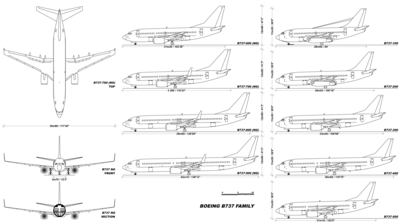

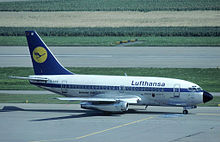

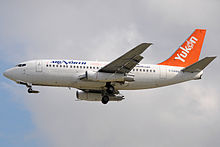











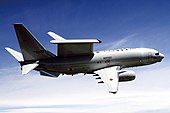
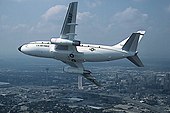


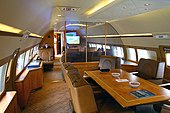



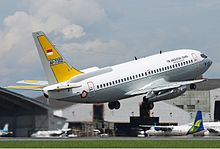

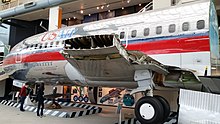
Boeing 737 ClassicBoeing 737 Next GenerationBoeing 737 MAXSouth African AirlinkNarrow-body airlinerManufacturerBoeingSouthwest AirlinesRyanairUnited AirlinesAmerican AirlinesLufthansaBoeing T-43narrow-bodyRentonWashingtonBoeing 727twinjetPratt & Whitney JT8D737 Classicupgraded737 Next Generationglass cockpit737 MAXCFM LEAPBoeing Business JetAirbus A320 familyMcDonnell Douglas DC-9A320neogrounded worldwidepodded enginesT-tailJoe Sutternacelleslanding gearhorizontal stabilizerSE 210 CaravelleBAC One-ElevenDouglas DC-9Fokker F28airfoilpounds-forceAir Transport Associationhigh-lift devicesmaintenanceBrien WygleFederal Aviation AdministrationCategory II approachesChicagoGrand Rapids, MichiganAll Nippon AirwaysMcDonnell DouglasUS Air ForceAirline Deregulation ActWichita, KansasSpirit AeroSystemsRenton factoryEverett factoryZurich AirportMalaysia–Singapore AirlinesAviancathrust reversalshort-fieldN515NAAir FloridaMuseum of FlightSeattleXiamen AirlinesU.S. Air ForceIndonesian Air ForceAloha AirlinesSierra Pacific AirlinesAir North"Unpaved Strip Kit"foreign object damageAlaska Airlinescombi aircraftAlaskaAir InuitNolinor AviationChrono AviationCanadian North737 MAX groundingsClassic seriesduopoly competitionwingletsAviation PartnersUSAir Flight 427Farnborough AirshowCFM InternationalCFM56-3B-1high-bypassturbofanBoeing 757Piedmont Airlinestailstrikeswing sparCSA Czech AirlinesLas Vegasfuel efficiencyCFM56-7P-8 PoseidonScandinavian AirlinesStockholm Arlanda AirportAirbus A318WestJetAmsterdam Airport SchipholAirbus A319United States NavyC-40 ClipperAirbus A319LRSan Diego International AirportHapag-Lloyd FlugTUIflyDelta AirlinesBaltimore/Washington International Thurgood Marshall AirportLion Airrear pressure bulkheadBoeing 757-200Airbus A321nautical milesAirbus A320neoAirbus A320neo familyMalindo Aircivil aviation authoritiesgrounded the 737 MAX